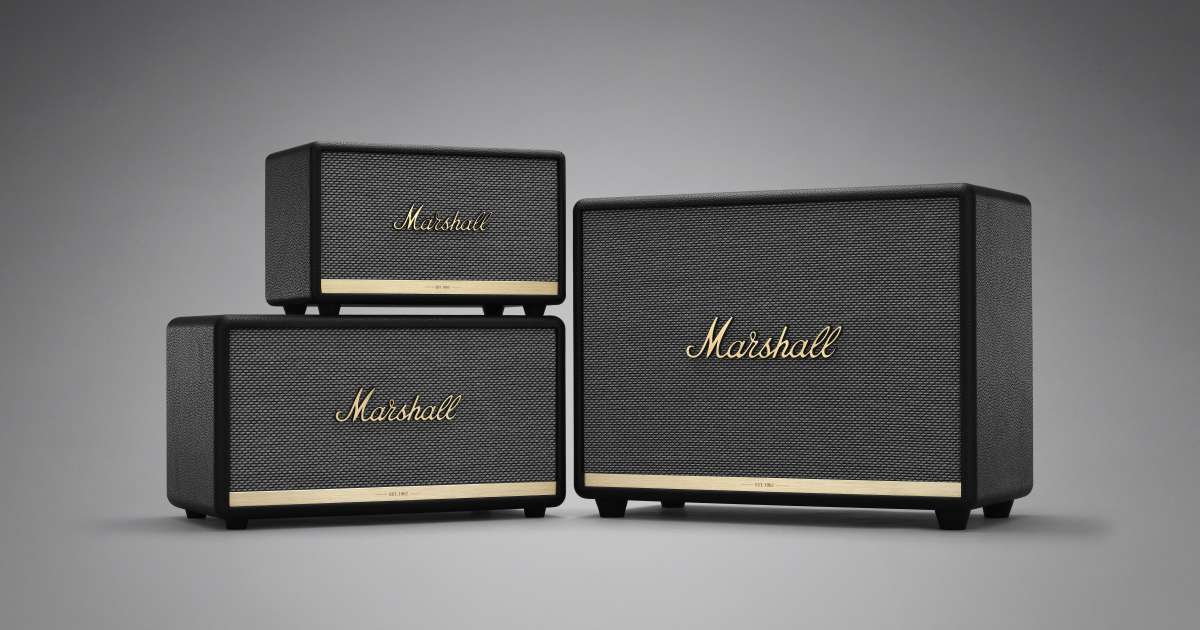Uncover the ‘AliExpress Blueprint’—your roadmap to understanding how it works, country-specific tips, and insider deals. This comprehensive guide demystifies the platform, offering strategic insights for tailored shopping experiences. Navigate the AliExpress landscape with confidence, armed with exclusive tips and insider knowledge to unlock maximum savings on every purchase.
Category: Audio Systems
Comprehensive Buying Guide for Audio Systems: Top Brands and Budget Options
Audio systems have become an essential part of our lives, whether it’s for entertainment, education, or work. With so many options available in the market, it can be overwhelming to choose the right one. This guide aims to provide a comprehensive buying guide for audio systems, including top brands and budget options.
- Types of Audio Systems: There are three main types of audio systems – traditional stereo systems, soundbars, and surround sound systems. Stereo systems provide high-quality sound, while soundbars are a compact and affordable option for enhancing TV sound. Surround sound systems offer an immersive audio experience.
- Components of an Audio System: An audio system consists of various components, including speakers, amplifiers, receivers, and subwoofers. It’s important to understand each component’s function to make an informed decision.
- Top Brands: Some of the top brands in the audio system market include Bose, Sonos, Yamaha, Denon, and Sony. These brands offer a wide range of products suitable for different budgets and needs.
- Budget Options: Not everyone can afford high-end audio systems. Some budget-friendly options include Vizio, TCL, and Polk Audio. These brands offer products that are affordable and provide decent sound quality.
- Features to Consider: When choosing an audio system, it’s important to consider features like compatibility, connectivity options, sound quality, and design. It’s also crucial to choose an audio system that fits your needs and budget.
- Where to Buy: Audio systems can be purchased from various retailers, including online and brick-and-mortar stores. It’s essential to research the seller and read reviews before making a purchase.
Choosing an audio system can be a daunting task, but with the right information, it can be a breeze. This comprehensive buying guide provides information on the types of audio systems, components, top brands, budget options, features to consider, and where to buy. Use this guide to make an informed decision and enhance your audio experience.
Audio System Product Comparison: Features, Pricing, and Reviews of Popular Brands
With so many options available in the market, choosing the right audio system can be overwhelming. This product comparison aims to provide a comprehensive overview of popular brands, including their features, pricing, and reviews. Use this comparison to make an informed decision and choose an audio system that fits your needs and budget.
| Brand | Features | Pricing | Reviews |
|---|---|---|---|
| Bose | – High-quality sound- Voice control- Wi-Fi and Bluetooth connectivity | $249 – $3,499 | “Clear and powerful sound”-“Easy to set up”-“Expensive” |
| Sonos | – Multi-room audio- Voice control- Wi-Fi and Bluetooth connectivity | $199 – $1,799 | “Impressive sound quality”-“Sleek and modern design”-“Pricey” |
| Yamaha | – Surround sound systems- MusicCast app for easy control- Wi-Fi and Bluetooth connectivity | $199 – $2,999 | “Great sound quality”-“Affordable prices”-“Can be tricky to set up” |
| Denon | – High-resolution audio support- HEOS app for easy control- Wi-Fi and Bluetooth connectivity | $279 – $3,999 | “Excellent sound quality”-“Easy to use app”-“Expensive” |
| Sony | – High-resolution audio support- Voice control- Wi-Fi and Bluetooth connectivity | $99 – $2,799 | “Clear and powerful sound”-“Affordable prices”-“Limited compatibility” |
This product comparison provides a comprehensive overview of popular audio system brands, including their features, pricing, and reviews. Whether you’re looking for high-quality sound, voice control, or multi-room audio, there’s an audio system that fits your needs and budget. Use this comparison to make an informed decision and enhance your audio experience.
Audio Systems for Every Budget: Affordable Options and High-End Brands
Audio systems can vary greatly in price, from affordable options to high-end brands. This list aims to provide options for every budget, including features and pricing. Whether you’re looking for a basic audio system or a top-of-the-line brand, there’s an option for you.
| Budget | Brand & Model | Features | Price |
|---|---|---|---|
| Under $100 | Anker Soundcore Bluetooth Speaker | Bluetooth connectivity- 24-hour battery life- Built-in microphone for hands-free calls | $39.99 |
| $100 – $300 | Polk Audio T15 Home Theater and Music Bookshelf Speakers | Dynamic balance technology for clear sound- Wide dispersion drivers- Versatile compatibility with different devices | $99.00 |
| $300 – $500 | Vizio 5.1 Home Theater Soundbar System | 5.1 surround sound- Wireless subwoofer and satellite speakers- Bluetooth connectivity | $349.99 |
| $500 – $1,000 | Klipsch Reference Theater Pack 5.1 Channel Surround Sound System | High-quality sound with minimal distortion- Sleek and modern design- Flexible placement options | $999.00 |
| $1,000 – $3,000 | Bowers & Wilkins Formation Wedge Wireless Speaker | High-quality sound with wireless connectivity- Stylish design- 120-degree sound dispersion for room-filling sound | $1,199.98 |
| Over $3,000 | McIntosh RS200 Wireless Loudspeaker System | Exceptional sound quality with advanced digital processing- Apple AirPlay 2 and Bluetooth connectivity- Room correction technology for optimal sound quality | $3,000.00 |
This list provides options for every budget, from affordable options to high-end brands. Whether you’re looking for a basic audio system or a top-of-the-line brand, there’s an option for you. Use this list to make an informed decision and enhance your audio experience within your budget.
Competitive Landscape Analysis of Audio Systems: SWOT Analysis of Major Players
The audio system market is highly competitive, with various brands vying for market share. This competitive landscape analysis aims to provide a comprehensive overview of major players in the audio system market, including their strengths, weaknesses, opportunities, and threats.
| Brand | Strengths | Weaknesses | Opportunities | Threats |
|---|---|---|---|---|
| Bose | – High-quality sound- Strong brand reputation- Innovative products | – Expensive products- Limited product range compared to competitors- Limited compatibility with third-party devices | – Expansion into emerging markets- Increased emphasis on sustainability- Investment in research and development | – Intense competition from established and emerging players- Economic downturns impacting sales- Intellectual property disputes |
| Sonos | – Multi-room audio technology- User-friendly app- Strong customer loyalty | – Expensive compared to competitors- Limited compatibility with non-Sonos devices- Lack of a dedicated voice assistant | – Expansion into international markets- Collaboration with other brands- Continued development of innovative products | – Intense competition from established and emerging players- Increasingly price-sensitive consumers- Potential for patent infringement lawsuits |
| Yamaha | – Diverse product range- Affordable pricing compared to competitors- High-quality sound and build quality | – Limited brand recognition outside of music industry- Limited product range compared to some competitors- Inconsistent product quality across different product lines | – Expansion into emerging markets- Investment in research and development- Collaboration with other brands | – Increasingly price-sensitive consumers- Intense competition from established and emerging players- Economic downturns impacting sales |
| Denon | – High-resolution audio support- HEOS app for easy control- Wide range of compatible devices | – Expensive compared to some competitors- Limited brand recognition compared to some competitors- Limited compatibility with non-Denon devices | – Expansion into emerging markets- Development of innovative products- Investment in sustainability | – Increasingly price-sensitive consumers- Intense competition from established and emerging players- Economic downturns impacting sales |
| Sony | – High-quality sound- Established brand reputation- Compatibility with a wide range of devices | – Limited product range compared to some competitors- Inconsistent product quality across different product lines- Limited support for emerging audio formats | – Expansion into emerging markets- Continued development of innovative products- Increased emphasis on sustainability | – Intense competition from established and emerging players- Economic downturns impacting sales- Intellectual property disputes |
This competitive landscape analysis provides a comprehensive overview of major players in the audio system market, including their strengths, weaknesses, opportunities, and threats. Whether you’re a consumer or investor, use this analysis to make informed decisions about audio system brands and their potential for growth and success in the market.
Latest Trends and Innovations in the Audio Systems Market: An Overview of What’s New
The audio systems market is constantly evolving, with new trends and innovations emerging regularly. This overview aims to provide insight into the latest trends and innovations in the market, including advancements in technology, design, and functionality.
- Wireless Connectivity: Wireless connectivity has become a staple in audio systems, allowing users to connect and control their devices seamlessly. This trend is continuing to evolve, with new wireless standards like Wi-Fi 6 and Bluetooth 5.2 allowing for faster and more reliable connections.
- Voice Control: Voice control technology has become increasingly popular in audio systems, allowing users to control their devices with simple voice commands. With the emergence of smart assistants like Amazon Alexa and Google Assistant, voice control has become a convenient and hands-free way to interact with audio systems.
- Immersive Audio: Immersive audio technologies like Dolby Atmos and DTS:X are becoming more prevalent in audio systems, providing a 3D sound experience that enhances the listener’s immersion. These technologies are particularly popular in home theater systems, providing an immersive and realistic movie-watching experience.
- Personalization: Personalization has become a significant trend in the audio systems market, with many brands offering customizable settings and profiles. This allows users to tailor their audio experience to their specific preferences, whether it’s adjusting EQ settings or creating custom playlists.
- Sustainability: Sustainability has become an increasingly important consideration for consumers, and many audio system brands are incorporating sustainable practices into their products. This includes using eco-friendly materials, reducing energy consumption, and implementing responsible recycling programs.
The audio systems market is continually evolving, with new trends and innovations emerging regularly. From wireless connectivity to immersive audio technologies and personalization, these trends are shaping the future of audio systems. As sustainability becomes an increasingly important consideration for consumers, we can expect to see more brands incorporating eco-friendly practices into their products. Keep these trends in mind when shopping for your next audio system to stay up to date with the latest advancements in the market.
Audio Systems for All Ages: From Kids to Seniors
Audio systems are enjoyed by people of all ages, from kids who love listening to music to seniors who enjoy enhancing their TV sound. This list aims to provide audio system options for different age groups and preferences, ensuring that everyone can enjoy high-quality sound and an immersive audio experience.
Audio Systems for Kids and Teens
| Brand & Model | Features | Price |
|---|---|---|
| JBL JRPOP Portable Bluetooth Speaker | Durable design for kids<br>- Bluetooth connectivity<br>- Up to 5 hours of playtime | $39.95 |
| Ultimate Ears WONDERBOOM 2 Waterproof Bluetooth Speaker | Waterproof and durable design<br>- 360-degree sound<br>- Bluetooth connectivity | $99.99 |
| Bose SoundLink Color Bluetooth Speaker II | Sleek and portable design<br>- Bluetooth connectivity<br>- Up to 8 hours of playtime | $129.00 |
Audio Systems for Young Adults
| Brand & Model | Features | Price |
|---|---|---|
| Sonos One Gen 2 Smart Speaker | Voice control<br>- Wi-Fi and Bluetooth connectivity<br>- High-quality sound | $199.00 |
| Amazon Echo Studio Smart Speaker | Immersive 3D audio<br>- Alexa voice control<br>- Bluetooth and Wi-Fi connectivity | $199.99 |
| Apple HomePod Mini Smart Speaker | Siri voice control<br>- High-quality sound<br>- Apple AirPlay 2 compatible | $99.00 |
Audio Systems for Middle-Aged Adults
| Brand & Model | Features | Price |
|---|---|---|
| Bose Soundbar 700 | Multi-room audio capabilities<br>- Wi-Fi and Bluetooth connectivity<br>- Alexa voice control | $799.00 |
| Sonos Beam Smart Soundbar | Amazon Alexa and Google Assistant voice control<br>- Wi-Fi and Bluetooth connectivity<br>- Compatible with AirPlay 2 | $399.00 |
| Vizio Elevate 5.1.4 Home Theater Soundbar | Immersive Dolby Atmos audio<br>- Wireless subwoofer and satellite speakers<br>- Bluetooth and Wi-Fi connectivity | $999.99 |
Audio Systems for Seniors
| Brand & Model | Features | Price |
|---|---|---|
| ZVOX SoundBase 570 Soundbar | Dialogue enhancement technology for clearer sound<br>- Bluetooth and optical connectivity<br>- Compact and easy to set up | $299.99 |
| Yamaha R-S202BL Stereo Receiver | High-quality sound<br>- Bluetooth connectivity<br>- Easy to use remote control | $179.95 |
| Sennheiser RS 185 RF Wireless Headphone System | Wireless connectivity up to 328 feet<br>- Comfortable and adjustable headphones<br>- Bass boost and surround sound modes | $399.95 |
This list provides audio system options for different age groups and preferences, ensuring that everyone can enjoy high-quality sound and an immersive audio experience. Whether you’re looking for a durable and portable speaker for kids or a sophisticated soundbar for seniors, there’s an option for you. Use this list to make an informed decision and enhance your audio experience.
Expert Reviews and Ratings of Audio Systems to Help Customers Choose the Best
Choosing the right audio system can be a daunting task, especially with the vast range of options available in the market. To help customers make an informed decision, this review provides expert ratings and reviews of popular audio systems, based on their features, performance, and overall value.
| Brand & Model | Expert Rating | Pros | Cons |
|---|---|---|---|
| Sonos One Gen 2 Smart Speaker | 4.5/5 | Excellent sound quality<br>- User-friendly app<br>- Voice control with Amazon Alexa and Google Assistant | Expensive compared to some competitors<br>- Limited voice control functionality |
| Bose SoundLink Revolve+ Portable Bluetooth Speaker | 4.5/5 | 360-degree sound<br>- Water-resistant design<br>- Long battery life | Expensive compared to some competitors<br>- Limited compatibility with third-party devices |
| Vizio SB36512-F6 5.1.2 Home Theater Sound System | 4/5 | Immersive Dolby Atmos audio<br>- Wireless subwoofer and satellite speakers<br>- Affordable price | Limited compatibility with some devices<br>- Setup can be time-consuming |
| Yamaha RX-V6A 7.2-Channel AV Receiver | 4/5 | High-quality sound and video<br>- Multiple HDMI inputs<br>- Compatible with Alexa voice control | Limited Bluetooth connectivity range<br>- On-screen menu can be confusing |
| Apple HomePod Mini Smart Speaker | 4/5 | Siri voice control<br>- High-quality sound<br>- Sleek design | Limited compatibility with non-Apple devices<br>- Limited app control options |
| Klipsch RP-450C Center Channel Speaker | 4.5/5 | Clear and powerful sound<br>- Durable and attractive design<br>- Compatible with a wide range of receivers | Expensive compared to some competitors<br>- Large size may not fit all setups |
This expert review and rating list provides valuable information for customers looking to purchase an audio system. From speakers and soundbars to receivers and smart speakers, this list covers a variety of popular audio system options. Use this review and rating list to make an informed decision and choose the audio system that best fits your needs and preferences.
Making Audio Systems Environmentally Friendly and Socially Responsible: Sustainability and Corporate Social Responsibility
As consumers become increasingly aware of the impact their purchases have on the environment and society, companies are under pressure to make their products more sustainable and socially responsible. This article aims to provide information on how audio system companies can make their products more environmentally friendly and socially responsible through sustainability and corporate social responsibility (CSR) initiatives.
Sustainability
- Use eco-friendly materials: Audio system companies can use materials that have a lower environmental impact, such as recycled plastics, sustainable woods, and biodegradable materials.
- Reduce energy consumption: Energy-efficient design features, such as automatic power-saving modes, can reduce the amount of energy consumed by audio systems.
- Responsible product lifecycle management: Companies can adopt responsible product lifecycle management practices, including responsible recycling and disposal of products at the end of their life cycle.
- Lower carbon footprint: Audio system companies can reduce their carbon footprint by using renewable energy sources, optimizing their supply chains, and reducing transportation emissions.
Corporate Social Responsibility
- Ethical sourcing: Companies can ensure that the materials used in their products are ethically sourced, with fair labor practices and no exploitation.
- Support local communities: Audio system companies can support local communities through initiatives such as charitable donations, volunteering, and community engagement programs.
- Diversity and inclusivity: Companies can promote diversity and inclusivity in their workforce and product offerings, ensuring that all individuals are represented and included.
- Transparency and accountability: Companies can be transparent about their sustainability and CSR initiatives, including reporting on progress and setting measurable goals.
By incorporating sustainability and CSR initiatives into their business practices, audio system companies can make their products more environmentally friendly and socially responsible. This not only benefits the environment and society but also enhances the company’s reputation and improves its bottom line. Consumers can also make a difference by choosing audio systems from companies that prioritize sustainability and CSR.
Choosing the Right Audio System: Factors to Consider Before Making a Purchase
With so many audio system options available in the market, it can be challenging to choose the right product. However, by considering certain factors, consumers can make an informed decision and select an audio system that best fits their needs and preferences. This article aims to provide guidance on how to choose the right audio system by highlighting important factors to consider before making a purchase.
Factors to Consider
- Audio Quality: One of the most critical factors to consider when purchasing an audio system is audio quality. Look for audio systems with high-quality sound, minimal distortion, and accurate soundstage representation.
- Connectivity: Consider the connectivity options available, such as Bluetooth, Wi-Fi, and auxiliary inputs. Make sure the audio system is compatible with your devices and offers a reliable and easy-to-use connection.
- Compatibility: Ensure that the audio system is compatible with your preferred music streaming services, such as Spotify or Apple Music, and can handle different file formats, such as FLAC or MP3.
- Form Factor: Consider the form factor of the audio system, such as soundbars, bookshelf speakers, or portable speakers. The size, shape, and weight of the audio system can impact its portability and placement in your home.
- Features: Look for audio systems with additional features that enhance the listening experience, such as voice control, multi-room audio, and equalizer settings.
- Price: Audio systems are available at various price points, so consider your budget and look for options that offer the best value for money.
- Brand Reputation: Consider the reputation of the brand and the product’s warranty and customer support options. Look for reviews from other customers and trusted sources to ensure the product is reliable and durable.
By considering these important factors, consumers can make an informed decision and choose the right audio system for their needs and preferences. Keep in mind that different types of audio systems will excel in different areas, so it’s important to prioritize the factors that matter most to you. Take your time to research and compare different options to ensure that you make the best purchase for your audio needs.
Market Dynamics of Audio Systems: Emerging Trends, Key Players, and Growth Prospects
The audio systems market is a highly dynamic and competitive industry, with various trends and players shaping its growth and development. This analysis aims to provide an overview of the market dynamics of audio systems, including emerging trends, key players, and growth prospects.
- Emerging Trends: The audio systems market is seeing emerging trends such as the integration of voice assistants, wireless and multi-room audio, smart speakers, high-resolution audio, immersive audio, and portable audio. Consumers are looking for more convenient and versatile ways to enjoy music and audio content.
- Key Players: The audio systems market has several key players, including Bose, Sonos, Yamaha, Denon, and Sony, which offer a range of products suitable for different budgets and needs. These brands invest heavily in research and development to stay ahead of the competition.
- Growth Prospects: The audio systems market is expected to grow in the coming years, with a growing demand for wireless and smart audio systems, voice control technology, and high-resolution audio. The market is expected to be worth $30 billion by 2026, with Asia-Pacific being the fastest-growing region.
- Competition and Pricing: The audio systems market is highly competitive, with various players vying for market share. Brands need to offer innovative products and features while maintaining competitive pricing to remain relevant and successful in the market.
- Distribution Channels: The distribution channels for audio systems have evolved, with traditional brick-and-mortar stores being complemented by online retail platforms. E-commerce has become an increasingly popular channel for consumers to purchase audio systems, with brands like Amazon and Best Buy dominating the online market.
The audio systems market is a highly dynamic and competitive industry, with emerging trends, key players, and growth prospects shaping its development. Consumers are looking for more convenient and versatile ways to enjoy music and audio content, and brands need to offer innovative products and features to remain relevant and successful in the market. Keep an eye on the market dynamics to stay informed and make informed decisions about audio systems.
Consumer Behavior and Buying Patterns for Audio Systems
Understanding consumer behavior and buying patterns is essential for audio system manufacturers and retailers to better meet consumer needs and expectations. This analysis aims to provide an overview of consumer behavior and buying patterns for audio systems based on research.
- Research and Comparison: Consumers conduct research and compare audio systems before making a purchase. They often read reviews and seek recommendations from friends and family before deciding on a product.
- Features and Quality: Consumers prioritize audio system features and quality when making a purchase decision. Key features include sound quality, compatibility, connectivity options, and design.
- Price: Consumers consider price when making a purchase decision, with budget constraints often influencing their decision. Consumers are willing to pay more for audio systems with high-quality sound and advanced features.
- Brand Reputation: Consumers often consider brand reputation and recognition when making a purchase decision. Established brands like Bose and Sonos have strong reputations in the audio system market and are often preferred by consumers.
- Convenience: Consumers also consider the convenience of using an audio system when making a purchase decision. Features like wireless connectivity and voice control technology make it easier for consumers to use and enjoy their audio systems.
- Social and Environmental Responsibility: Consumers are increasingly concerned with social and environmental responsibility when making a purchase decision. Brands that prioritize sustainability and ethical practices are often preferred by consumers.
Consumers conduct research and comparison before making a purchase decision, prioritizing audio system features and quality, price, brand reputation, convenience, and social and environmental responsibility. Audio system manufacturers and retailers should consider these factors when designing and marketing their products to better meet consumer needs and expectations. Keep an eye on consumer behavior and buying patterns to stay informed and adapt to changing consumer preferences.
The Impact of Technological Advancements on Audio Systems: A Detailed Exploration
Technological advancements have had a significant impact on the audio systems industry, leading to improvements in sound quality, connectivity options, and user convenience. This analysis aims to explore the impact of technological advancements on audio systems in detail.
- Sound Quality: Technological advancements have led to improvements in audio system sound quality, with advancements in digital signal processing and speaker design. Brands are now offering high-resolution audio systems that support advanced audio formats like FLAC and DSD, providing a more immersive and enjoyable listening experience.
- Connectivity: Technological advancements have also led to improvements in audio system connectivity, with wireless and multi-room audio systems becoming increasingly popular. Brands like Sonos and Bose have pioneered the development of multi-room audio systems that allow users to control and stream music in different rooms through a single app. Bluetooth connectivity has also become a standard feature in most audio systems, making it easier to connect and stream music from different devices.
- Voice Control: Voice control technology has become increasingly popular in the audio systems industry, with brands like Amazon and Google integrating their voice assistants with audio systems. This allows users to control their audio systems with voice commands, making it easier and more convenient to use.
- Design and User Experience: Technological advancements have led to improvements in audio system design and user experience. Brands are now offering sleek and modern designs that complement home d?cor, making audio systems a part of the home entertainment experience. User-friendly apps have also become a standard feature in most audio systems, making it easier for users to control and customize their audio experience.
- Sustainability: Technological advancements have also led to improvements in sustainability, with brands investing in eco-friendly materials and manufacturing processes. Sustainable and ethical practices are becoming an increasingly important factor in consumer purchase decisions.
Overview of Global Trade Dynamics for Audio Systems: Import-Export Trends and Trade Policies
The audio systems market is a global industry, with various players and markets shaping its growth and development. This analysis aims to provide an overview of the global trade dynamics for audio systems, including import-export trends and trade policies.
- Import-Export Trends: The global trade of audio systems has seen significant growth in recent years, with countries like China, the United States, Japan, and Germany being the leading exporters of audio systems. The demand for audio systems is increasing in emerging markets like Asia-Pacific and Latin America, with China being the largest importer of audio systems.
- Trade Policies: Trade policies and regulations play a significant role in the global trade of audio systems. The World Trade Organization (WTO) oversees international trade policies, including tariffs and quotas. Countries also have their own regulations and standards for audio systems, such as the European Union’s CE marking and the United States’ Federal Communications Commission (FCC) regulations.
- Tariffs: Tariffs on audio systems can vary greatly depending on the country and product type. The United States has imposed tariffs on certain audio products from China as part of the ongoing trade war between the two countries. The European Union has also imposed tariffs on certain audio products from the United States in response to trade policies.
- Intellectual Property: Intellectual property protection is a significant issue in the global trade of audio systems, with brands seeking to protect their patents and trademarks from infringement. The WTO oversees the protection of intellectual property rights in international trade.
- Market Access: Market access is an important issue in the global trade of audio systems, with countries seeking to expand their access to different markets. Free trade agreements, such as the Comprehensive and Progressive Agreement for Trans-Pacific Partnership (CPTPP) and the Regional Comprehensive Economic Partnership (RCEP), aim to increase market access and reduce trade barriers for audio systems and other products.
The global trade of audio systems is a complex and dynamic industry, shaped by import-export trends and trade policies. Understanding global trade dynamics is essential for audio system manufacturers and retailers to expand their access to different markets and meet consumer needs and expectations. Keep an eye on global trade policies and regulations to make informed decisions about the global trade of audio systems.
Latest Innovations and Research in Audio Systems: Discoveries and Breakthroughs
The audio systems industry is constantly evolving, with new innovations and research leading to discoveries and breakthroughs. This overview aims to provide information on the latest innovations and research in audio systems.
- 3D Audio: 3D audio is an emerging technology that simulates a 360-degree sound field, providing an immersive audio experience for users. This technology has been used in virtual reality applications and is now being integrated into audio systems to enhance the listening experience.
- Artificial Intelligence (AI): Artificial intelligence has the potential to revolutionize the audio systems industry, with applications in sound recognition, noise cancellation, and voice control. AI-powered audio systems can learn user preferences and adjust settings accordingly, making it easier and more convenient to use.
- Spatial Audio: Spatial audio is an emerging technology that enhances the sound field by creating a more immersive and realistic listening experience. This technology is being integrated into headphones and other audio systems to provide users with a more lifelike audio experience.
- Energy Efficiency: Energy efficiency is becoming an increasingly important factor in the design and development of audio systems. Brands are investing in energy-efficient materials and manufacturing processes to reduce the environmental impact of their products.
- Sustainability: Sustainability is also becoming a priority for audio system manufacturers, with brands investing in eco-friendly materials and sustainable manufacturing processes. This includes using recycled materials and reducing waste in the production process.
- Wireless Charging: Wireless charging is an emerging technology that is being integrated into audio systems to provide users with a more convenient and hassle-free charging experience. This technology eliminates the need for cords and cables, making it easier to charge audio devices.
The audio systems industry is constantly evolving, with new innovations and research leading to discoveries and breakthroughs. From 3D audio and artificial intelligence to energy efficiency and sustainability, there are various advancements that are shaping the future of the industry. Keep an eye on these latest innovations and research to stay informed and adapt to the changing needs and expectations of consumers.
Company Approaches to Developing Audio Systems: Ideation to Commercialization Strategies
Developing audio systems is a complex process that involves ideation, prototyping, and commercialization. Companies approach this process in different ways, depending on their resources, goals, and target markets. This analysis aims to provide an overview of how companies approach the development of audio systems, from ideation to commercialization strategies.
- Ideation: The ideation phase involves generating ideas for new audio systems based on consumer needs and trends. Companies conduct market research and gather feedback from consumers to identify potential product opportunities. This phase can involve brainstorming sessions, focus groups, and surveys to gather insights.
- Design and Prototyping: The design and prototyping phase involves creating a concept for the audio system and building a prototype for testing and validation. Companies use computer-aided design (CAD) software and other tools to create detailed designs and renderings of the audio system. They then build a physical prototype to test and refine the design.
- Testing and Validation: The testing and validation phase involves testing the audio system prototype to ensure that it meets consumer needs and expectations. Companies conduct usability tests, sound quality tests, and other tests to validate the design and functionality of the audio system.
- Commercialization: The commercialization phase involves bringing the audio system to market and promoting it to consumers. Companies use various commercialization strategies, including marketing campaigns, partnerships, and distribution channels, to promote and sell the audio system. They also monitor consumer feedback and make improvements to the audio system based on feedback and market trends.
Developing audio systems is a complex process that involves ideation, prototyping, and commercialization strategies. Companies approach this process in different ways, depending on their resources, goals, and target markets. The ideation phase involves generating ideas for new audio systems based on consumer needs and trends, while the design and prototyping phase involves creating a concept for the audio system and building a prototype for testing and validation. The testing and validation phase involves testing the audio system prototype to ensure that it meets consumer needs and expectations, while the commercialization phase involves bringing the audio system to market and promoting it to consumers. Keep an eye on company approaches to developing audio systems to stay informed and make informed decisions about audio systems.
AliExpress Expedition: Navigating Daily Deals, Coupons, and Country-Specific Discounts
Embark on the ‘AliExpress Expedition,’ a guide to navigating daily deals, coupons, and country-specific discounts. Sail through the sea of savings with expert tips on maximizing your shopping experience. Discover the treasure trove of discounts tailored to your location. This expedition is your compass to unlocking the full potential of AliExpress, ensuring a rewarding shopping journey.
Smart Shopper’s Handbook: AliExpress Coupons for Every Country and User Type
Unlock savings globally with the ‘Smart Shopper’s Handbook.’ This guide decodes AliExpress coupons for every country and user type. Navigate the world of discounts tailored to your location and shopping preferences. Elevate your savings game with strategic coupon mastery, ensuring a savvy and personalized shopping experience. Your passport to smart, global shopping starts here.
Beyond Borders: AliExpress Case Studies on Shopping Strategies and Savings
Explore the world of savings with ‘Beyond Borders.’ Delve into AliExpress case studies unveiling effective shopping strategies and unparalleled savings. Learn from real-world examples that transcend borders, providing insights to elevate your shopping game. This guide is your key to unlocking a global perspective on strategic and budget-friendly AliExpress shopping.
Unlocking Savings: A Global Guide to Timely Deals and AliExpress Coupon Mastery
Discover exclusive savings worldwide with ‘Unlocking Savings.’ This global guide unveils timely deals and expert tips for mastering AliExpress coupons. Maximize your budget and explore a world of discounts, ensuring savvy shopping on every purchase. Unlock the secrets to saving big with this essential resource.
AliExpress 101: From Origins to Daily Deals – A Shopper’s Manual
Dive into the AliExpress shopping experience with ‘AliExpress 101.’ From its origins to daily deals, this manual is your ultimate guide. Uncover the platform’s evolution and navigate daily deals like a pro. Elevate your shopping game with insights that transform you into a savvy AliExpress shopper. Your comprehensive handbook for mastering the art of online bargains.
Inside AliExpress: Ownership, Headquarters, and the Culture Behind the Curtain
Peel back the curtain with ‘Inside AliExpress.’ Explore ownership, headquarters, and the culture shaping this e-commerce giant. Unveil the inner workings of AliExpress, gaining insights into its corporate identity. This guide offers a rare glimpse behind the scenes, providing a nuanced understanding of the company’s origins, leadership, and the culture that propels its global success.
Decoding AliExpress: A Comprehensive Guide to Shipping, Delivery, and Courier Partners
Crack the code with ‘Decoding AliExpress,’ a comprehensive guide to shipping, delivery, and courier partners. Gain insights into the intricate logistics web of AliExpress, ensuring a seamless understanding of the journey from order to arrival. Navigate the complexities with confidence, armed with knowledge on shipping methods, delivery times, and key courier partnerships.
From Click to Doorstep: AliExpress Delivery Times Unveiled – A Global Perspective
Embark on a journey ‘From Click to Doorstep’ with AliExpress Delivery Times Unveiled. Gain a global perspective on efficient shipping. This guide unveils the secrets behind AliExpress delivery, ensuring you understand the process from click to doorstep. Navigate the world of online shopping with confidence, armed with insights to streamline your delivery experience.
Saving Secrets: AliExpress Fraud Prevention and Smart Shopping Strategies
Unlock ‘Saving Secrets’ with AliExpress Fraud Prevention and Smart Shopping Strategies. Arm yourself with insights to safeguard your purchases and navigate the e-commerce landscape with confidence. This guide reveals fraud prevention measures and savvy strategies, ensuring a secure and intelligent approach to AliExpress shopping. Maximize savings while prioritizing peace of mind on every transaction.
Banggood Review: From Gadgets to Garments + Exclusive Banggood Coupon Codes
Discover a world of gadgets to garments with Banggood. Our review navigates through a diverse range of products. Unlock exclusive savings with Banggood Coupon Codes—seamlessly transition from tech to fashion at affordable prices. Explore a marketplace where innovation meets style, ensuring your shopping experience is both versatile and budget-friendly.
August AliExpress Promo Codes: Back to School Bargains
By Sneha, Your Trusted Journalist I am going on a journey to explore the exciting world of August AliExpress Promo Codes, specifically designed to bring back-to-school bargains. Shoppers can access various deals, coupon codes, and limited-time offers to make their shopping experience more budget-friendly and rewarding. It’s a chance to get quality products at discounted […]
October AliExpress Promo Codes: Get Discounts Now
By Sneha, Your Trusted Journalist I am going on a journey, embarking on an exciting exploration into the world of discounts and savings. Today, we delve into the realm of October AliExpress Promo Codes, an opportunity for thrifty shoppers to get the best deals on a variety of products. As we move along, here are […]
September AliExpress Promo Codes: Fall into Savings
By Sneha, Your Trusted Journalist I am going on a journey to unveil exciting opportunities for holiday shopping! In this adventure, we delve into the realm of discounts and offers that AliExpress has in store for us this September . The festive season is upon us, and AliExpress, being the generous host, has a multitude […]
July AliExpress Promo Codes: Beat the Heat with Hot Deals
By Sneha, Your Trusted Journalist I am going on a journey to explore a realm of fantastic discounts and exciting deals. AliExpress, the renowned online retail platform, is set to kickstart the summers with a bang, offering remarkable discounts through their July Promo Codes. It’s a fantastic way to welcome the new year with savings […]
May AliExpress Promo Codes: May Flowers and Discounts
By Sneha, Your Trusted Journalist I am going on a journey into the realm of savings and blossoms. I am on this exciting journey to explore the delightful world of discounts and deals for the month of May, courtesy of AliExpress. May, often associated with blooming flowers and renewed energy, brings not only nature’s rejuvenation […]
June AliExpress Promo Codes: Summer Savings Are Here
By Sneha, Your Trusted Journalist I am going on a journey to unravel the exciting realm of summer shopping. The sun-kissed days of June beckon us to embrace the joys of summer, and what better way to celebrate than indulging in some retail therapy? In this adventure, we will delve into the world of AliExpress […]
April AliExpress Promo Codes: April Showers of Discounts
By Sneha, Your Trusted Journalist I am on an exciting journey delving deep into the captivating realm of discounts. So, fasten your seatbelts as we navigate through the vast landscape of savings. Our ultimate destination? April AliExpress Promo Codes: a spectacular affair that promises a downpour of discounts, embellishing this blossoming season with unbeatable deals […]
March AliExpress Promo Codes: Spring into Savings
By Sneha, Your Trusted Journalist I am going on a journey into the world of March AliExpress Promo Codes, where shopping enthusiasts and savvy buyers unite for unbeatable Holi deals and more. As the month of colours dawns upon us, the anticipation for fantastic discounts and offers on AliExpress is soaring high. Let’s explore this […]
February AliExpress Promo Codes: Valentine’s Day Deals and More
By Sneha, Your Trusted Journalist I am going on a journey into the world of February AliExpress Promo Codes, where shopping enthusiasts and savvy buyers unite for unbeatable Valentine’s Day deals and more. As the month of love dawns upon us, the anticipation for fantastic discounts and offers on AliExpress is soaring high. Let’s explore […]
January AliExpress Promo Codes: Start the Year with Savings
By Sneha, Your Trusted Journalist I am going on a journey to explore a realm of fantastic discounts and exciting deals. AliExpress, the renowned online retail platform, is set to kickstart the new year with a bang, offering remarkable discounts through their January Promo Codes. It’s a fantastic way to welcome the new year with […]
December AliExpress Promo Codes: Holiday Discounts Await!
By Sneha, Your Trusted Journalist I am going on a journey to unveil exciting opportunities for holiday shopping! In this adventure, we delve into the realm of discounts and offers that AliExpress has in store for us this December. The festive season is upon us, and AliExpress, being the generous host, has a multitude of […]
November AliExpress Promo Codes: Unlock Savings for the New Month
By Sneha, Your Trusted Journalist I am going on a journey to explore the exciting realm of online shopping in the month of November. Brace yourselves as we unravel the latest from AliExpress, a hub of incredible deals and discounts. Welcome to this adventure of savings and style, where I’ll guide you through the lucrative […]
AliExpress Promo Codes for October: Get Discounts Now
By Sneha, Your Trusted Journalist I am going on a journey to unravel the exciting world of October discounts at AliExpress. In this exploration, I am set to navigate through the vast realm of savings that AliExpress is generously offering this month. It’s a journey filled with surprises and great deals, and I’m excited to […]
AliExpress Promo Codes for New Customers: Unlock Big Savings Today
By Sneha, Your Trusted Journalist Welcome aboard, new users, as we embark on an exciting journey into the realm of AliExpress – your go-to destination for incredible deals and exclusive discounts tailored especially for you. In this ever-evolving world of online shopping, we’re here to introduce you to the art of finding the finest deals. […]
Exploring the Price Tag: Unraveling the Cost of Marshal Speakers
When it comes to iconic audio equipment, few brands can match the timeless reputation of Marshall. Renowned for their exceptional sound quality and stylish designs, Marshall speakers have become the epitome of excellence in the world of audio engineering. However, with their reputation also comes a significant price tag that often leaves consumers pondering the […]
Embarking on a Shopclues Journey: My Personal Review of Products, Services, and More
In today’s digital age, online shopping has become an integral part of our lives. With a plethora of e-commerce platforms available, it can be overwhelming to choose the right one. As an avid online shopper, I have always been on the lookout for reliable platforms that offer a wide range of products at affordable prices. […]
Snapdeal Review: An Evaluation of the Ultimate One-Stop Shop for All Your Online Shopping Needs
As someone who has been shopping with Snapdeal for over five years, I can confidently say that it is the one-stop shop for all your online shopping needs. From fashion to electronics, Snapdeal offers a wide range of product categories that cater to all your requirements. What’s more, the user-friendly platform makes it easy to […]



























